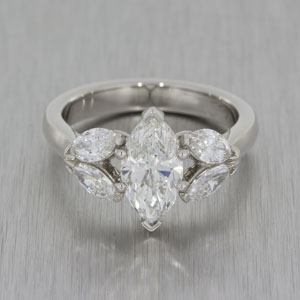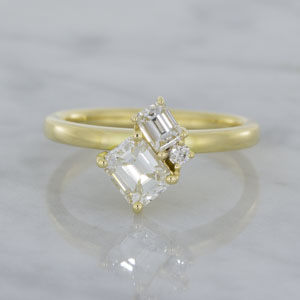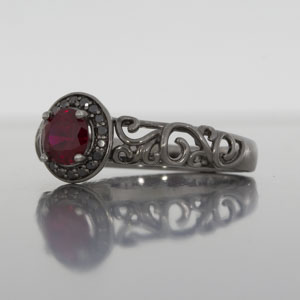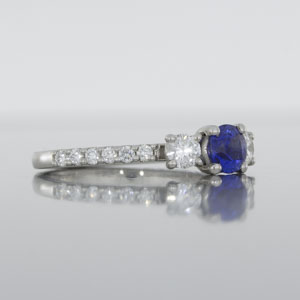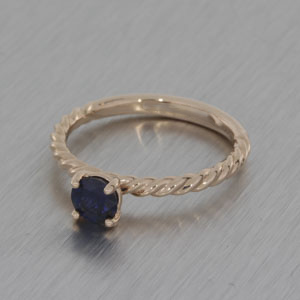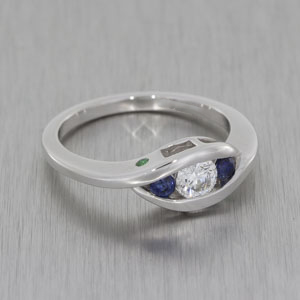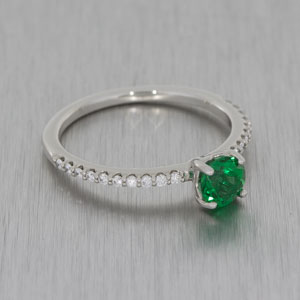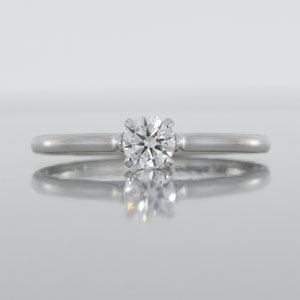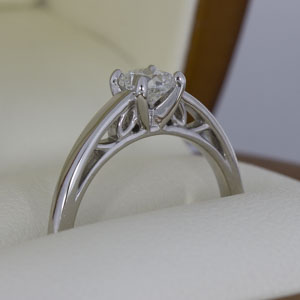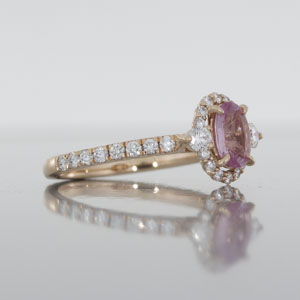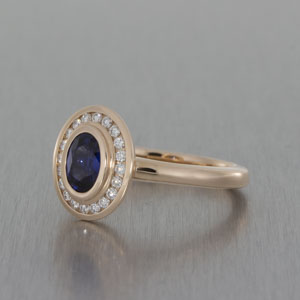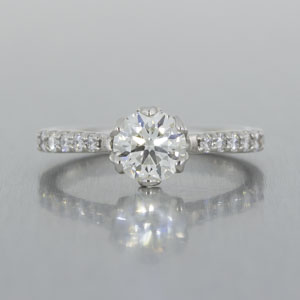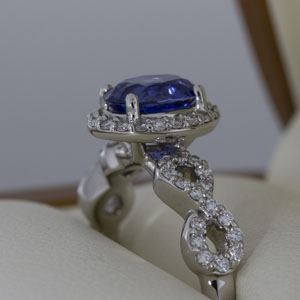


This chart is a 3D way of imaging the hue, tone and saturation and how they work together.
Sapphire
Gem family corundum, sapphires are available in every colour of the rainbow (except for red, as a red corundum is a Ruby). Sapphires have a Mohs hardness of 9 and their resistance to scratches means that are great for everyday wear such as engagement and wedding rings. Blue sapphires are the most abundant and popular, with variations including royal blue, deep and dark blue and teal. Sapphires also come in bi colour; Padparadscha (which means lotus colour in Sanskrit) is a magical blend of peach and orange while and Australian Parti Sapphires (Aussie slang for partition) have a distinct blue and yellow sections giving each sapphire a unique and playful green/blue/ yellow atmosphere. Sapphires are the birthstone of September and celebrate 45th wedding anniversaries. Read about how to care for your gemstones.


Ruby
Rubies are in the corundum family. In colour they range from pink to deep pigeon blood red. Rubies are 9 on Mohs hardness and their resistance to scratches means they’re great for everyday wear. Inclusions in rubies can present a risk of chipping or breaking so always look for the best quality that you can afford. Rubies are the birthstone of July and celebrate 40th wedding anniversaries. Read about how to care for your gemstones.
Emerald
In the beryl family, Emeralds have been loved since the time of the Ancient Egyptians for their mesmerizing beauty. The eponymous colour of Emerald is strong green with the slightest hint of blue. Emeralds are 7.5-8 on the Mohs scale of hardness and are fair-to-good for everyday wear. Very few emeralds are completely clean of inclusions and some can appear cloudy or sleepy from the presence of inclusions. Well known for being brittle, emeralds can present some risk of breaking or chipping and should be treated delicately. This may also impact the suitability of certain ring designs and availability of some shapes (the Emerald cut was designed specifically for Emeralds with corners removed to reduce risk of chipping and breaking). Emeralds are the birthstone of May and celebrate 55th wedding anniversaries. Read about how to care for your gemstones.

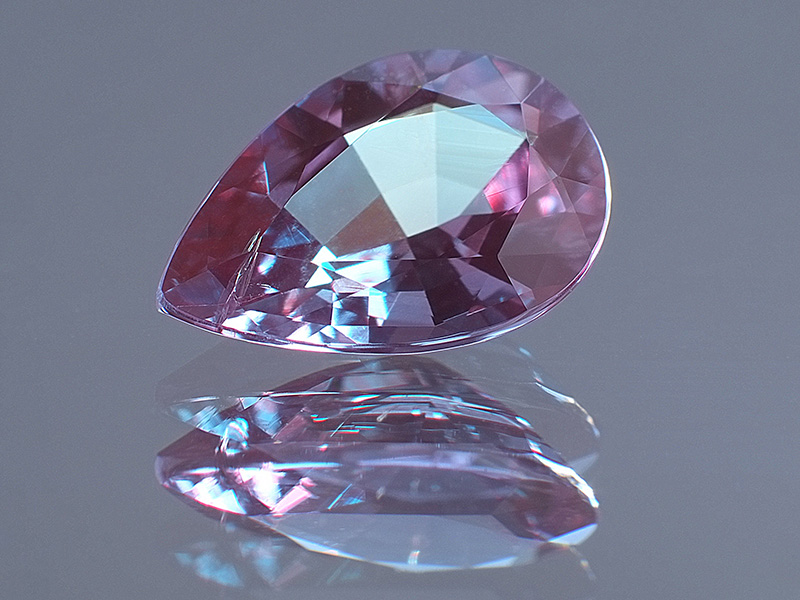
Alexandrite
Alexandrite is a remarkable type of chrysoberyl. It reacts to the light around it, in daylight appearing leafy green in colour while turning red to reddy-brown in artificial light. Alexandrite is 8.5 in the Mohs hardness scale making it a great option for everyday wear. Alexandrite is incredibly rare making it one of the most expensive natural gemstone options. Alexandrite is the birthstone of June. Read about how to care for your gemstones.
Aquamarine
Aquamarine is a type of Beryl. The colour of Aquamarine ranges from pale sky blue to sea green and rare dark blue. Sky blue aquamarine best enjoyed in medium to large sized gemstones and the visibility of colour is significantly reduced in smaller, shallower examples. It has a Mohs hardness of 7.5-8 making it fair-to-good for everyday wear. Aquamarine is the birthstone of March. Read about how to care for your gemstones.


Morganite
Family Morganite is in the Beryl family. The colour is a soft peach with the majority of morganite being pale in colour and some rare stones are more saturated. When set in a closed bezel setting of white metal the colour can appear more intense. Morganite is 7.5-8 on the Mohs hardness scale making it fair-to-good for everyday wear. Read about how to care for your gemstones.
Opal
Opal is amorphous, it is formed through a solution of silicone dioxide and water, the solution travels through the earth filling voids from fossils and gaps in rocks. As the water evaporates the silicone remains. This process repeats in layers over very long time periods and opal is formed. Opal is characterised by its vibrant rainbow of colours caused by light diffraction. The two main base colours of opals are white and black, though fire opals and boulder opals are other stunning examples. Opals are 5.5-6.5 in Mohs hardness making them unsuitable for everyday wear. They need to be treated with great care and exposure to water and sudden temperature changes can cause them to crack. Opals are the birthstone of October. Read about how to care for your gemstones.


Pearl
Natural or cultured pearls are an organic material created by a living creature. In nature, foreign objects trapped in the shells of certain molluscs will be coated with layers of nacre as a defence mechanism, gradually building into a pearl. (Nacre is the same material which is seen on the inside of these creature’s shells.) Pearls are characterised by their lustre, with base colours of white, black and soft pink or green tones. Pearls are 3-4 on the Mohs hardness scale, they are most adored in the form of necklaces and earrings where their delicate beauty can be enjoyed. It is inadvisable to set pearls in rings where they can become easily damaged by wear or dislodged due to their spherical shape. Pearls are used to celebrate 30th wedding anniversaries. Read about how to care for your gemstones.
Tanzanite
Tanzanite is from the Ziosite family of gemstones. It is incredibly rare and is only found in one area of Tanzania. Tanzanite is an indigo-violet colour, it will appear a little more blue in daylight and a little more purple under artificial light, though this change is slight. Tanzanite is 6.5-7 on the Mohs hardness scale and should be worn with care. Tanzanite is the birthstone of December. Read about how to care for your gemstones.
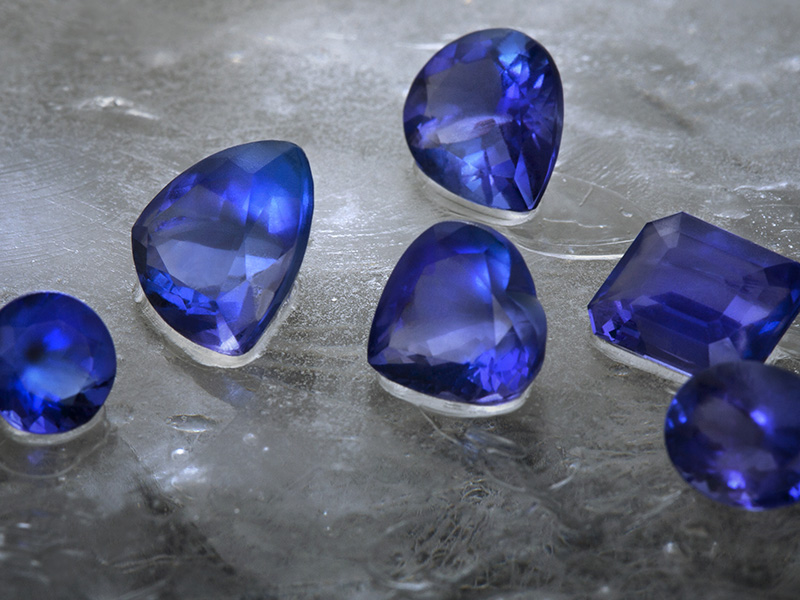

Topaz
Topaz comes in a wide range of colours, most often thought of as having sherry and apricot tones, Topaz is actually available in pinks, reds, blues and colourless. Topaz is 8 on the Mohs hardness scale making it fair-to-good for everyday wear. Topaz is the birthstone of November. Read about how to care for your gemstones.
Tourmaline
Tourmaline offers a variety of stunning colours, sometimes with several in one stone. Popular colours of Tourmaline are deep olive greens, bottle greens and pinks. Bi Colour and Tri Colour Tourmalines offer stunning variations for designs particularly when used in emerald or baguette cuts to highlight their colour variation. One example is the watermelon Tourmaline which is green and pink in one stone. Tourmalines are 7-7.5 in mohs hardness making them fair for everyday wear and should be treated with care. Tourmaline is the birthstone of October. Read about how to care for your gemstones.

AS SEEN IN





